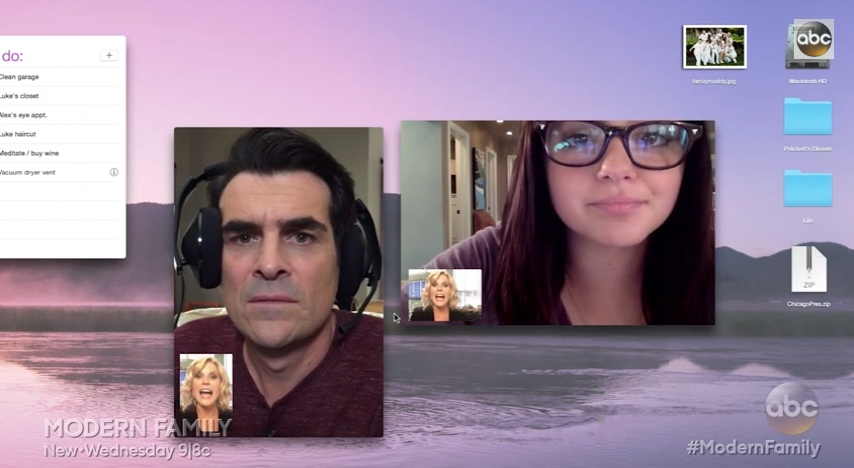By the time you reach your sixth year of anything, you’ve got to find new ways to keep it interesting. Last night’s Modern Family tried something new: The entire episode, running more than 21 minutes, was filmed on iPhones and other Apple devices, with the familiar backdrop of a computer desktop. Seen from Claire’s perspective, the episode follows all the main characters as they interact online.
Since “Connection Lost” aired, much has been made of how the episode focuses on Apple products, or how the cast and crew pulled off filming it, or how it speaks to themes of communication within a family. Across the board, the attention is on the technology itself. But this episode felt uniquely modern for another reason: it used multitasking as a new way to tell a story.
Throughout the episode, there are usually two or more characters interacting on FaceTime. Despite the unconventional format, this is, of course, the way scenes generally work: Two characters talk at each other, which pushes the plot along. But on multiple occasions in last night’s episode, we hear two characters having a conversation while we see that Claire is doing something else: texting a third party, reading the news, checking her email.
On the whole, it was a genuine narrative feat. Late in the episode, Claire and Phil are freaking out that their daughter, Haley, might be pregnant. “What are we going to do?” Phil asks, and we see Claire, in her smaller window, shaking her head hopelessly. Phil continues speaking, making threats to the father of Haley’s child and lamenting that he didn’t see this coming. But while he talks, the camera zooms in on a different part of Claire’s screen: She pulls up a browser and googles “moms who raise their daughter’s baby.”
It’s a small moment, filling the visual space before Ty Burrell’s next joke lands. Nevertheless, it’s great. Modern Family taught viewers how to read a sitcom differently. It asked the audience to understand the TV screen the same way they understand their computer screens: quite simply, as a place where multiple things can happen at once.
